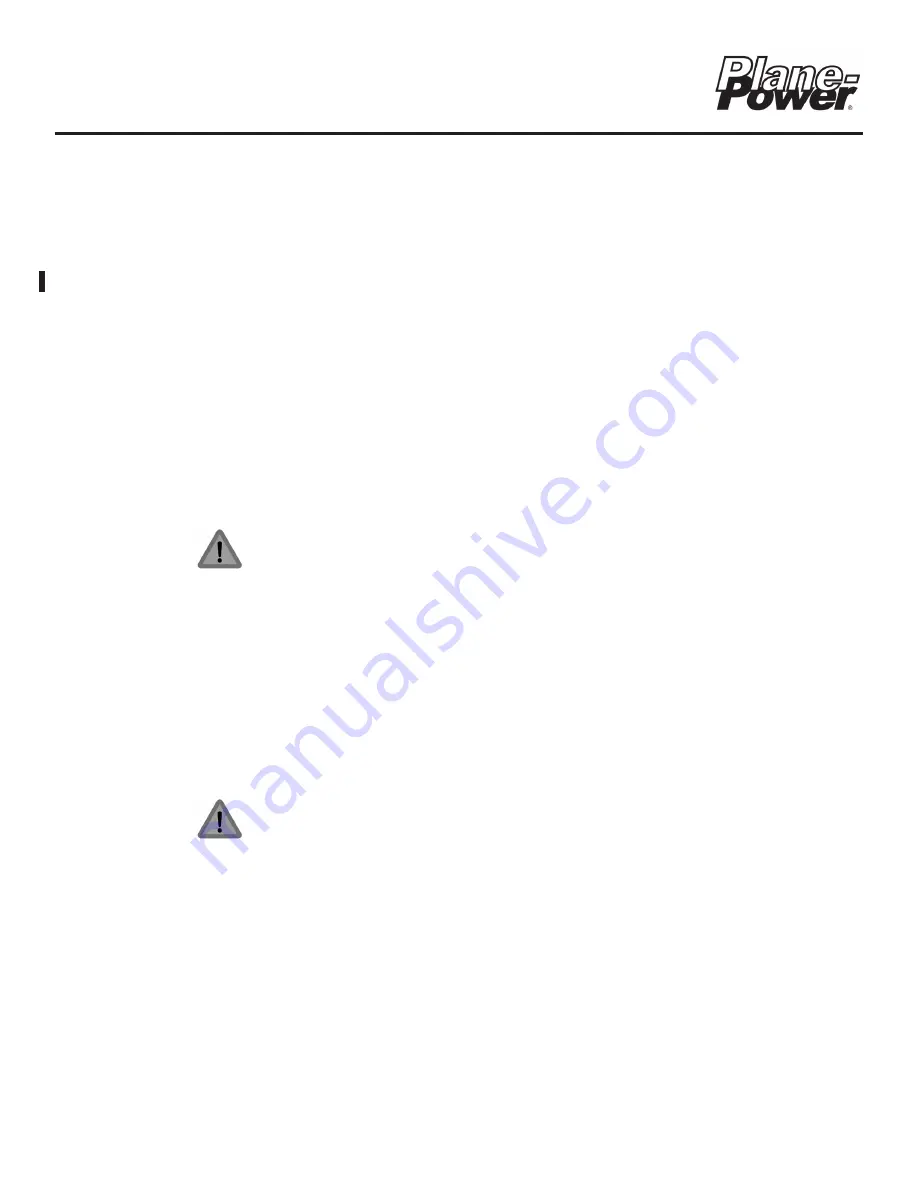
C. Order of Tests
(1) To minimize the affects of heat, it is recommended to test the alternator at the highest RPM rating first
(see Tables 5.1 thru 5.3).
D. Test Setup
(1) For gear driven alternators, install a fabricated test pulley (Fig. 5.1), washer, and nut onto the alternator
shaft.
All ES-10024B
and ES-14024B models shall be tested with the original manufacturer installed
pulley.
(2) If testing a gear driven alternator, torque nut to 30 ft-lbs max to secure the fabricated test pulley.
(3) Mount the alternator to a test bench that is capable of turning the rotor shaft 10,000 RPM in combination
with drive pulley and alternator pulley. See Fig. 5.2 for typical test bench setup.
(4) Apply 50-80 lbs. of tension to drive belt and check for belt slippage. If the belt slips, increase tension in
10 pound increments, not to exceed 120 lbs. Check drive belt tension with a belt tension gauge. Do not
exceed maximum belt tension in Table 6.2 for belt driven alternators.
(5) Make electrical connections as shown in Figures 5.4 and 5.5.
WARNING
TO PREVENT PERSONAL INJURY AND OR COMPONENT
DAMAGE FROM ARCING, HOOK THE BATTERY TO THE
SYSTEM ONLY AFTER ALL OTHER CONNECTIONS ARE
MADE.
NOTE:
It is recommended to use a switched jumper from the F1 terminal to the DC output terminal.
Once the battery is connected, F1 is energized and has potential to drain the battery. It is
recommended to leave the jumper open until ready to test the alternator.
(6) Close the circuit between the DC output terminal and the F1 terminal. This will energize the field (F1).
(7) Run Tests #1 thru #3 (Table 5-1): At each speed point, adjust the variable DC load bank to obtain the
specified voltage.
CAUTION:
ALL GEAR DRIVEN ALTERNATORS REQUIRE A SOURCE OF
VENTILATION. DO NOT TEST THESE ALTERNATORS AT FULL
RATED OUTPUT FOR MORE THAN 30 SECONDS.
(8) Once the alternator passes all tests, remove the alternator from the test bench.
(9) Remove nut, washer, and pulley from the alternator.
(10) For gear diven alternators, inspect the rotor shaft (13) threads and O-ring (2) for damage, repair or
replace if damage is noted.
(11) For belt driven alternators, inspect pulley grooves for sharp nicks or scratches , repair or replace if
damaged.
Aircraft Alternator
Maintenance Manual
ES1031
24-30-01
Rev. B: 20 Apr. 2022
Page: 5-5
© 2022 - Hartzell Engine Technologies - All rights reserved
















































